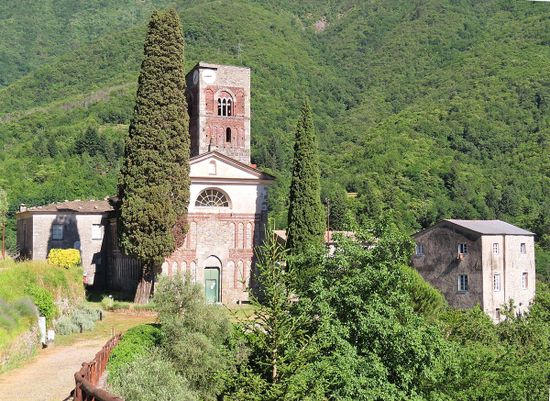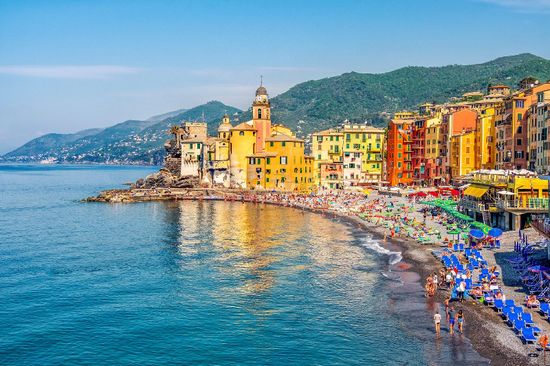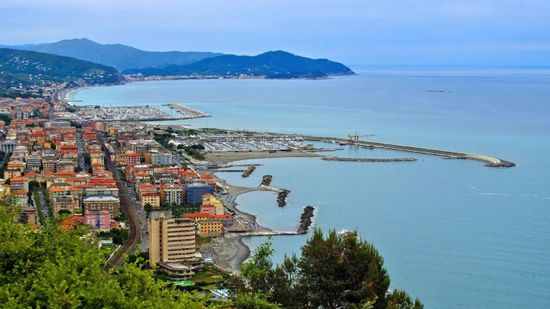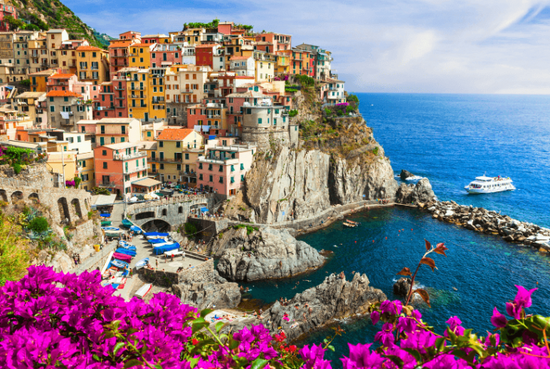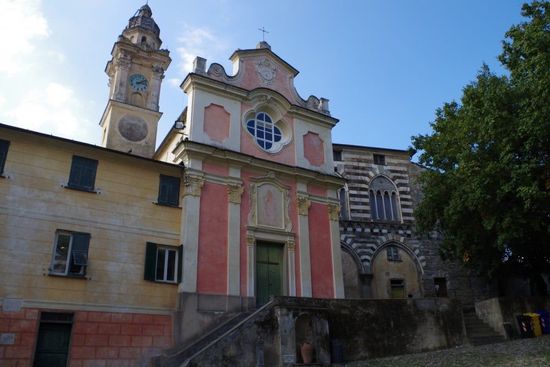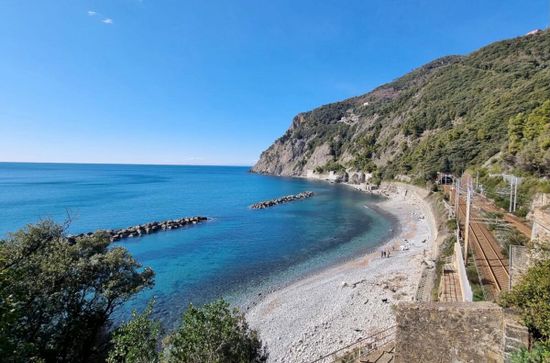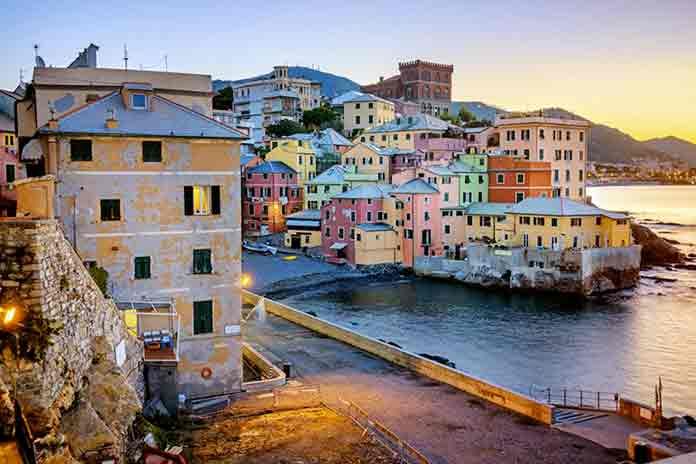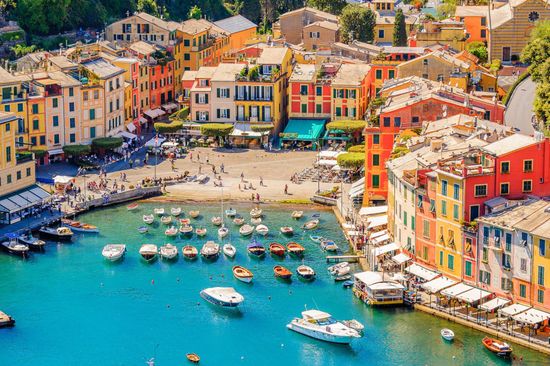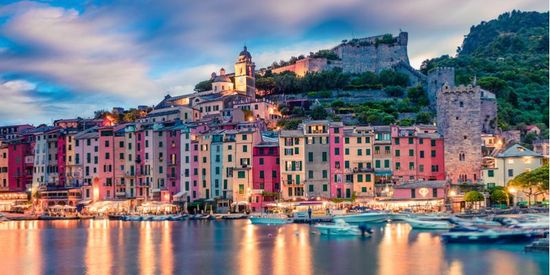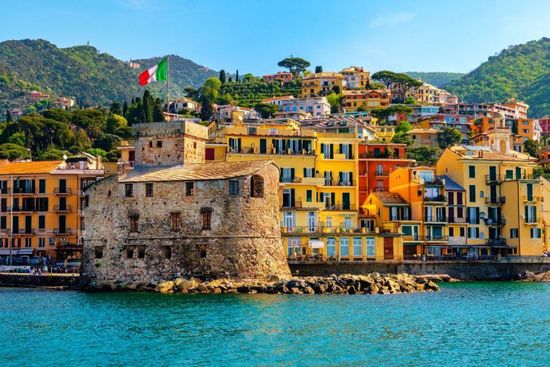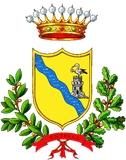Around Lavagna
Let us recommend you things to see around Lavagna, an area rich in places of interest.
Abbey of Borzone
Borzonasca
About 30 minutes' drive (but well worth it!), 1,100 feet above sea level in a solitary spot, about two miles from the town of Borzonasca, stands the beautiful Abbey of Borzone. The story of its foundation is still unclear today, as there are no certain dates. According to some testimonies, the church and the monastery were built at the behest of the Lombard king Liutprando between 712 and 714.
Camogli
About every half hour a train passes from Lavagna, bringing you to the heart of this incredible corner of the Ligurian Riviera in twenty minutes, one of the most beautiful seaside villages in Europe. During your journey, all along the coast, you can admire the picturesque towns of Zoagli, Rapallo, Santa Margherita and Portofino, making the trip a very evocative one. Camogli is a magical place overlooking the Gulf of Paradiso, a few steps from which there is another fascinating place, San Fruttuoso. During the summer, these two locations can also be reached by a ferry leaving from the port of Lavagna.
Chiavari
Chiavari, across the Entella river, is connected to Lavagna by three bridges, all of which can be crossed on foot or by any other means. The ancient heart of the town is Via Martiri della Liberazione, locally known as Caroggio Drito, whose old arcades cover shops and boutiques of all kinds, a shopper’s paradise with not only big brands but also niche ones, boasting an incredible variety of excellent products, particularly clothes and leather goods.
Cinque Terre
In summer, ferries and trains leave from Lavagna every day to visit this masterpiece of nature, the Cinque Terre, made up of Monterosso, Vernazza, Corniglia, Manarola and Riomaggiore. Liguria is home to one of the most beautiful places in the world, a World Heritage Site. The Cinque Terre are a little paradise on the sea, a stone's throw from Lavagna and not far from Genoa.
Cogorno
A small village in the eastern valleys with an ancient history, starting in the pre-Roman era and inextricably tied up with the vicissitudes of popes and emperors. A few miles from Lavagna, Cogorno is a stop on the ancient slate road, where you can find unforgettable landscapes, flavours of ancient tradition and historical sights.
Framura, Bonassola, Levanto
Framura is an extraordinary place, wild and quiet, overlooking the Ligurian Sea. It’s a few miles from Lavagna and a stone's throw from the Cinque Terre. The green of the land combines with the deep blue of the sea to create an incredible setting. Nestling between the beaches and hills are churches like that of San Lorenzo, which houses the Deposition of Jesus by Luca Cambiasio.
Genoa
Genoa is one of the most beautiful cities in Italy. From the aquarium to the Palazzi dei Rolli, from the Nervi promenade, to the historic Lanterna, on to the exhibitions at Palazzo Ducale in Genoa, there is art, culture and entertainment everywhere.
A metropolis overlooking the sea, Genoa grew up around its port. Its ancient heart, the largest medieval nucleus in Europe, is criss-crossed by a dense network of alleys, where you can feel the multicultural soul that has always defined the history of the city.
Portofino
Portofino is one of the most exclusive destinations in the world, one of the most popular in Liguria, one of the most beautiful on the planet. The Portofino headland area became a regional natural park in 1977, and offers a unique ecosystem due to the combination of various climatic and morphological factors. Faithful to the principle of healthy coexistence between tourist needs and historical preservation, the village maintains its traditional Ligurian appearance, the reason for the great charm of an area that has not suffered the wear and tear of technological progress.
Portofino is 16 miles from Lavagna.
Portovenere
A medieval village perched on the sea, Porto Venere is undoubtedly one of the pearls of Liguria, a UNESCO World Heritage Site and a unique place. Narrow and charming alleyways, the colours of the houses overlooking the sea and the elegance of its little port make Porto Venere an exclusive, enchanting location that leaves visitors fascinated by its uniqueness and beauty. Do not miss the Church of San Pietro, built in 1277 in typical Genoese Gothic style, Byron’s cave, and the Doria Castle, a military fortress overlooking the sea. Porto Venere is 50 miles from Lavagna.
Rapallo
Rapallo is another of Liguria's exclusive destinations. The elegant and lively Lungomare Vittorio Veneto, with its many hotels and cafes, calls to mind those mythical cosmopolitan years of the Belle Époque. Opposite is the vast beach with private beaches and the international port, with modern equipment and more than 900 berths. Almost in the centre of the vast sandy curve rises the Castle, a mid-16th-century construction which stands on a rock jutting out into the sea.



